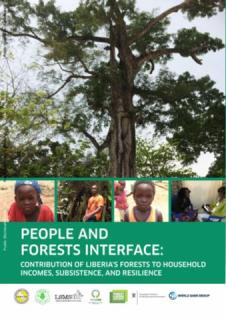
Liberia is one of the most forested countries in West Africa, with more than two thirds of its land surface covered by forest. The National Forest Inventory, conducted by the Liberia Forestry Development Authority in 2018 and 2019, estimates the forest cover in Liberia to be 6.69 million hectares which is approximately 69 percent of the total landmass. Liberia’s formal (measured) forest contribution to the national economy runs between nine and 10 percent of GDP. Forestry is the fourth largest contributor to economy, after services, agriculture and fisheries, and mining and panning. According to the 2020 Forest Resources Assessment produced by the FAO, as of 2015, around 39,880 full time equivalent workers (of which about 35 percent women) were formally employed by the sector. However, the formal sector is just a small part of the story. Clearly, forest-related products and environmental services make significant contributions to the subsistence, incomes, employment and coping needs of poor rural households. Yet, in national income accounting, these contributions are often ignored, or are only partially measured. This is as true for Liberia as for many other countries worldwide. Without detailed data on household and forest interactions, policy makers are unable to understand the economic and social interactions between households and forests and the effects these have on both people and forests. This data-gap was emphasised in the Liberia Country Forest Note prepared in 2018 and the Liberia National Household Forest Survey (NHFS) was implemented to close this data gap. Significant dependence of forest proximate households on forests for subsistence needs and incomes was the main prior assumption for the survey.
